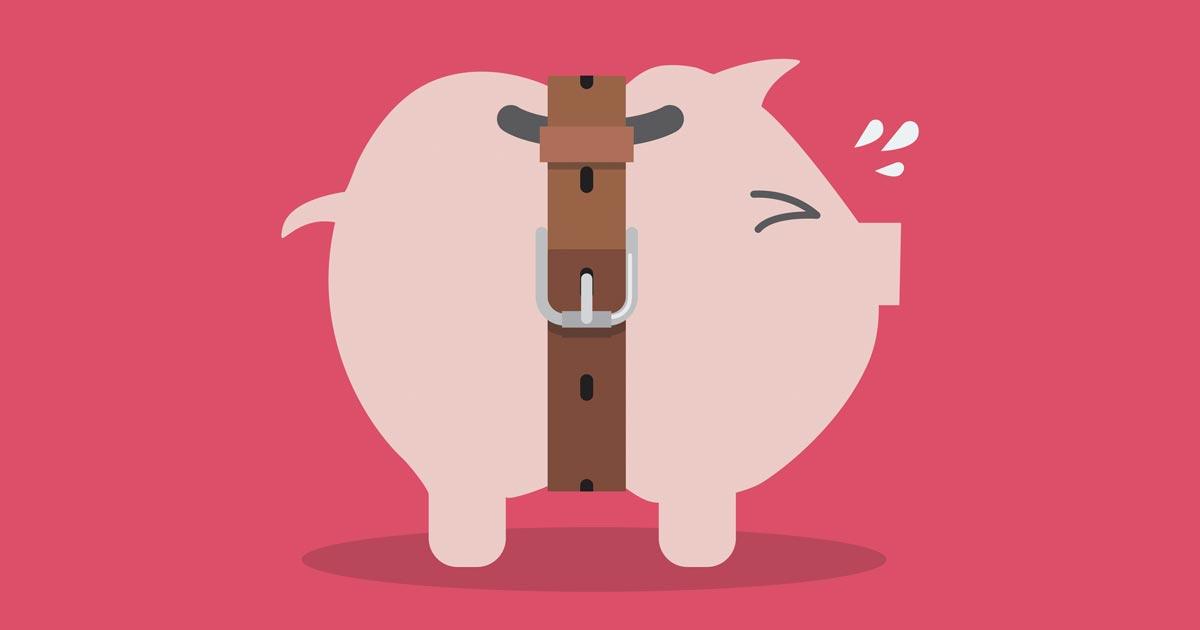
In response to the strengthening of the Consumer Price Index (CPI) growth rate yearly to 8.6 percent in May 2022 from 5.0 percent in May 2021, on Wednesday, June 15, 2022, the US central bank (the Fed) raised the policy interest rate by 75 basis points—the largest increase since 1994. The new target range now stands at 1.50 percent to 1.75 percent, and most Fed officials expect the policy rate to rise well above 3.0 percent by the end of the year.
Fed officials believe that the correct approach to counter this massive increase in the CPI is to raise interest rates. A tighter interest rate stance, it is held, is going to cool off the demand for goods and services. This in turn, is likely to weaken the growth rate of the CPI, labeled as inflation. This is based on the central bank planners’ view that to place the economy on the trajectory of stable prices and stable economic growth it is necessary to raise interest rates.
Also, note that officials are of the view that at present the key drivers of inflation are various negative supply shocks that emanate from factors such as the response to covid-19 and the Ukraine-Russia war. In this way of thinking, it makes sense to curb the demand for goods and services by raising interest rates in order to place the demand in line with the curtailed supply.
By defining inflation as increases in the prices of goods and services, Fed officials have absolved themselves of any responsibility for massive increases in the growth rate of the CPI. By this definition, in addition to various unexpected shocks, producers and businesses are also to blame for the widespread price increases. If Fed officials were to concede that inflation is about increases in the money supply, then they would have to accept that the key cause behind strong increases in prices is the alleged inflation fighter the Fed itself.
Note that we do not say, as the monetarist followers of Milton Friedman, that inflation is caused by increases in money supply. We hold that inflation is the increase in the money supply. (Note that for monetarists, inflation is about increases in prices, which are set in motion by increases in the money supply).
Furthermore, to establish the presence of inflation, what matters is not the growth rate of prices as such but increases in the money supply, which set in motion the exchange of nothing for something. This in turn undermines the process of wealth generation and weakens the pool of wealth. When this pool is expanding the increases in money supply generate the illusion that it is money supply, that provides funding, to both wealth-generating and non-wealth-generating activities.
Once the pool becomes stagnant or starts to decline, the strengthening in the growth rate of money supply cannot cause any longer the illusion that increases in money supply can grow the economy.
Now, a major source for the generation of money supply is the central bank lending to the government. For instance, the government embarks on a project to build a pyramid in New York. To fund the project the government could raise taxes or borrow the necessary funds from the private sector or from overseas. Another option is for the government to borrow the money from the Fed by offering the central bank Treasury securities in return.
By lending the government the required funds, the Fed in fact generates money out of “thin air.” Observe that the generation of money created this way emerges whenever the central bank engages in the buying of assets. Each time it buys an asset the bank pays for it with the money out of nothing. Another source for money creation is the expansion of commercial bank lending not backed by savings.
Interest Rate Policy Can Make Things Worse
For most individuals, maintaining their life and well-being is the ultimate goal. We know that to stay alive an individual must consume goods in the present, which means expressing a higher preference to the present versus the future or expressing a time preference. As a result, the individual will assign to the basket of goods in the present a greater importance than to the same basket of goods in the future. The assigned premium to the present goods versus the future goods is what the interest rate is. Thus, an individual that has very few resources is unlikely to consider sacrificing present goods for future goods. His time preference is going to be very high—i.e., the interest rate in this case is going to be lofty. With the increase in his wealth, the individual is likely to reduce his time preference—i.e., agree to exchange his present goods for a lower interest rate.
Note that in a free market, interest rates fluctuations mirror changes in consumer preferences regarding present consumption versus the future consumption. If consumers lower their preference toward present consumption versus future consumption this is going to be mirrored by a decline in the market interest rates. Conversely, if consumers raise their preference to present consumption this is likely to be portrayed by an increase in the market interest rates.
In a free market, a decline in interest rates will be in response to consumers lowering their preference toward the present consumption versus the future consumption. Businessmen if they want to succeed, have to abide by interest rates signals. This means that businessmen would have to increase the allocation of resources toward the buildup of an infrastructure in order to be able to produce some time in the future a larger quantity of various consumer goods.
Whenever the central bank tampers with financial markets and manipulates market interest rates, it falsifies consumers’ instructions to businesses. As a result, businesses establish wrong infrastructure not in line with consumers’ wishes. Because of the misallocation of resources, the process of economic impoverishment begins.
Countering inflation requires the closure of the loopholes that enable the generation of fiat money, the major one being the Fed’s lending to the government and the commercial bank lending unbacked by savings. (Note that in a free market without the central bank, the likelihood that commercial banks will be engaged in lending not backed by savings will be very low).
High Interest Rate Policy versus the Closure of Monetary Loopholes
A tight interest rate policy from the central bank undermines various bubble activities that emerged on the back of the previous low interest rate policy. Because of the low interest rate policy, there emerges an increase in the growth rate of banks’ lending not backed by savings. Increase in this type of credit diverts wealth from wealth generators to bubble activities.
An increase in interest rates arrests the diversion of wealth, which in turn undermines bubble activities. This in turn sets in motion an economic bust. The larger the percentage of bubble activities out of all the activities, the larger the bust is going to be.
The fact that the diversion of wealth from wealth generators toward bubbles is arrested should be regarded as good news. This leaves more wealth at the disposal of wealth generators. However, because of the central bank raising interest rates, which is tampering with financial markets, this falsifies interest rate signals. (Note that both the lowering and the raising of interest rates is tampering with financial markets).
This in turn raises the likelihood that wealth generators continue committing a misallocation of resources. Consequently, this weakens further the wealth-generation process. Hence, a tighter interest rate stance of the central bank by undermining bubble activities and wealth-generating activities makes the economic bust more severe and prolong.
Contrast this with a policy that closes the loopholes for the generation of money out of “thin air.” The policy of curbing the fiat money supply only undermines bubble activities because it arrests the diversion of wealth from wealth generators to them. Such policy however, is great news for wealth generators since now less wealth is diverted from them. This in turn is likely to lead to the expansion in the pool of wealth.
As the pool of wealth expands, it becomes possible to absorb various bubble activities and convert them into wealth-generating activities. The expansion in the pool of wealth is likely to shorten the economic slump and make it less severe.
Conclusion
A tighter interest rate stance undermines not only bubble activities but also wealth-generating activities. This in turn only prolongs the economic slump. If the central bank were to focus on true inflation, which is increases in money supply, this would remove the bubble activities and support wealth producers. Consequently, this would shorten the period of the economic slump.



